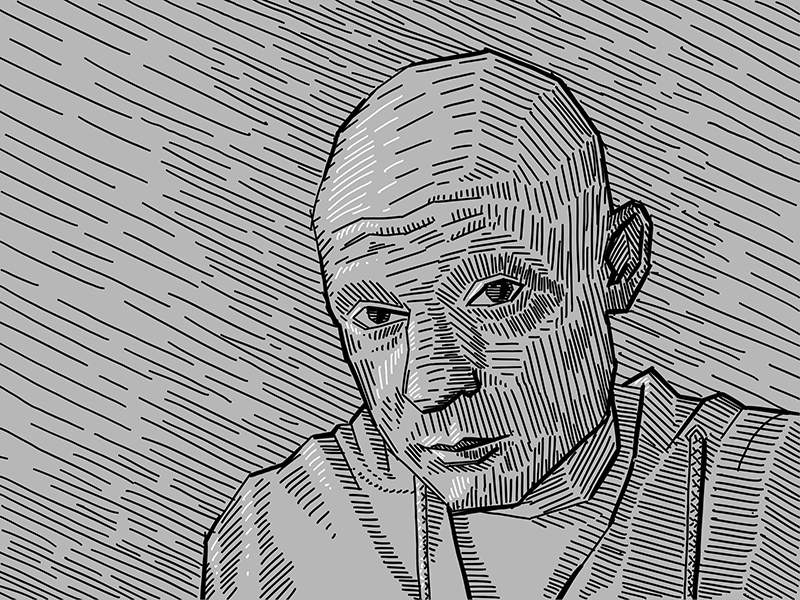
For examples of different pattern types see the Artlandia Glossary of Pattern Design. A popular drawing practice is Zentangles, in which an abstract or representational outline is divided into different areas, each of which contains a unique pattern. Pattern is the uniform repetition of any of the elements of art or any combination thereof. Anything can be turned into a pattern through repetition. Some classic patterns are spirals, grids, weaves. A sense of movement can be created by diagonal or curvy lines, either real or implied, by edges, by the illusion of space, by repetition, by energetic mark-making. Movement is the result of using the elements of art such that they move the viewer's eye around and within the image. Complementary colors placed side by side is an example of contrast. Notan is an example of contrast.Įmphasis is when the artist creates an area of the composition that is visually dominant and commands the viewer's attention. Contrast can be achieved by juxtapositions of any of the elements of art. Negative/Positive space is an example of contrast. See the article, Balance, for some visual examples of how the elements of art can be used to achieve balance.Ĭontrast is the difference between elements of art in a composition, such that each element is made stronger in relation to the other. When placed next to each other, contrasting elements command the viewer's attention. Areas of contrast are among the first places that a viewer's eye is drawn. Radial symmetry, in which elements are equally spaced around a central point, as in the spokes coming out of the hub of a bicycle tire. For example, a large circle on one side of a composition might be balanced by a small square on the other side Symmetry, in which both sides of a composition have the same elements in the same position, as in a mirror-image, or the two sides of a face.Īsymmetry, in which the composition is balanced due to the contrast of any of the elements of art. It is a sense that the painting feels stable and "feels right." Imbalance causes a feeling of discomfort in the viewer.īalance can be achieved in 3 different ways:

For example, when creating emphasis, the artist might also be using contrast or vice versa. It is generally agreed that a successful painting is unified, while also having some variety created by areas of contrast and emphasis is visually balanced and moves the viewer's eye around the composition. Thus it is that one principle of art can influence the effect and impact of another.īalance refers to the visual weight of the elements of the composition. While an artist might not use all the principles of design in one piece, the principles are intertwined and the use of one will often depend on another. The artist decides what principles of art he or she wants to use in a painting. The use of these principles can help determine whether a painting is successful, and whether or not the painting is finished. The principles of art represent how the artist uses the elements of art to create an effect and to help convey the artist's intent. The principles of art and design are balance, contrast, emphasis, movement, pattern, rhythm, and unity/variety. These are line, shape, color, value, form, texture, and space. The following image are good examples of conceptual unity for ideas that everyone generally understands because they are objects that tend to be paired together.The elements and principles of art and design are the foundation of the language we use to talk about art. The elements of art are the visual tools that the artist uses to create a composition. The disk might reference fellow Dada artist Marcel Duchamp’s “Rotoreliefs.” The bird's beak appears to be pulling a string that activates a rotating disk. Here, a lithograph mounted on wood shows a parrot perched on a branch. (These are works for which he is best known.) Birds often figured in his small wooden boxes.


By day, he scoured second-hand bookstores and antique shops in Manhattan to collect images and objects that served as the raw material for his art. In researching the piece, we learn that Joseph Cornell was inspired by Marcel Duchamp to create a similar work.Ĭornell was a solitary and eccentric figure who lived all his life in his mother’s house in Queens, New York caring for his invalid brother. In just looking at this shadow box, there is no clear reason why these dissimilar forms are put together to create this work. Joseph Cornell's shadow box is a good example of conceptual unity, particularly, objects that the artist joins together for reasons only that artist knows. \)Ĭonceptual unity occurs when the artwork unites ideas known by just the artist or those that everyone understands.


 0 kommentar(er)
0 kommentar(er)
